Jan Haseler led a walk through the conifer plantations of the Englefield Estate, to the west of Mortimer on the Hampshire / Berkshire border, on the morning of Saturday 29 July. Target species was the Grayling butterfly. It is one of Britain’s fastest declining butterflies and has recently been upgraded to Endangered on the British Red List. But despite the gloomy national situation, the local population is thriving. The walk started from Stephen’s Firs, a quiet residential street on the western side of Mortimer, and crossed the road into Holden’s Firs. The path opened up into a heathland clearing in which there were two Bronze Age tumuli. Dwarf Gorse and Bell Heather were already in flower, while Ling was just coming into bloom. A Peacock butterfly basked on a log and a Small Copper and several Gatekeepers were also seen. Two Tawny Grisette fungi, showing the characteristic grooved outer edge of the cap, were found next to the path. Further on, a wet section of the track had Lesser Spearwort, Water Purslane and Marsh Cudweed, with Common Centaury in flower nearby. The track led to a ride hub where a collection of plants had become established on the bare gravel. Flowers found here included Scarlet Pimpernel, Field Madder, Hare’s-foot Clover and Heath Milkwort. A Ringlet was spotted low down in the grass in the corner of the open area, while a Red Admiral was resting on a nearby Gorse bush. Across the road in Hundred Acre Piece is another ride hub. Next to the road are two big Buddleia bushes which have kindly been left for the butterflies by the forestry team. These had attracted at least half a dozen Peacocks, plus several Red Admirals, a Large White and a Silver-washed Fritillary.
The walk continued along a ride with particularly flowery margins which led westwards from the hub. Flowers here included Common Bird’s-foot-trefoil, Wild Teasel, Common Toadflax, Common Knapweed, Agrimony, Common Fleabane, Tufted Vetch, Upright Hedge-parsley, Gypsywort, and Comfrey. Further back from the ride edge, some of the Bramble bushes still had some blossom, as well as ripening fruit. Butterflies along this stretch included Large and Small Skipper, Meadow Brown and Gatekeeper. A Goat’s-rue plant had white flowers, rather than the more usual purple variety. A pair of Red-tailed Bumblebees were mating down on a stony piece of ground, while a blue male Broad-bodied Chaser perched on a bramble bush. Another ride-side Buddleia had attracted at least five Peacocks, a Comma, two Silver-washed Fritillaries and a number of Red Admirals. The walk continued down a ride to the right. The plot on the right hand side of the track had an unusual planting scheme – fast-growing Eucalyptus trees under-planted with a wide selection of smaller conifers. Damp sections beside the track had Water-plantain, Brooklime, Cross-leaved Heath, Horseradish, Marsh Thistle, Greater Bird’s-foot-trefoil and Marsh Speedwell.
The ride led to a T-junction, with a stony track running north-south. A heather-covered bank on the far side bordered an area of more recent gravel extraction. Turning southwards along the stony track, the route entered prime Grayling territory. The Graylings were resting on the ground or flying round the Bell Heather on the bank. They would fly on a short distance, land and close their wings together, tuck the forewing with its prominent eye patterns behind the cryptically coloured hind wing, shuffle round and then vanish. It was hard to keep track of the individual butterflies, but at a conservative estimate, there were at least 30 Graylings along the track. There were also many Gatekeepers and Meadow Browns, plus a Holly Blue, which had small black dots on a pale blue background on the underside of its wings. The bank provided shelter from the westerly wind. A Falcon with a piercing call, repeated on one note about five times, flew overhead and over to the gravel-pit on the far side of the track. It was thought likely to be a Hobby. The walk continued to the southern end of the track, followed a short path through to the open gravel pit area on the far side of bank and then followed the bank back northwards along its entire length. It was prime Grayling habitat, with fine heathland grasses, plenty of bare ground and a generous nectar supply from all the heather. But it was exposed to the westerly wind and fewer Graylings, perhaps about 20, were counted. At the northern end of the site, the group scrambled over a low section of the bank, followed the track back to the T-junction and then headed back eastwards beside the Eucalyptus plot. Turning right at the end, the next track led past a dense clump of Great Horsetail. A small toadlet was found down amongst the grass. Common Figwort, Meadow Vetchling and Hoary Ragwort were found in the margins of the next ride, together with Six-spot Burnet Moths and two Brown Argus butterflies. A zig-zag route led down towards a large pond. Funnel spiders had constructed intricate webs on the bank at the side of the track. Hard Fern, Trailing St John’s-wort and Hedge Bedstraw were noted, then dangling seeds of two Hornbeam trees hung low above the path. The route passed the pond and climbed the far side of the valley, passing a Green-veined White butterfly on Bramble blossom. The final section of the walk was through Pickling Yard plantation and back to the start.
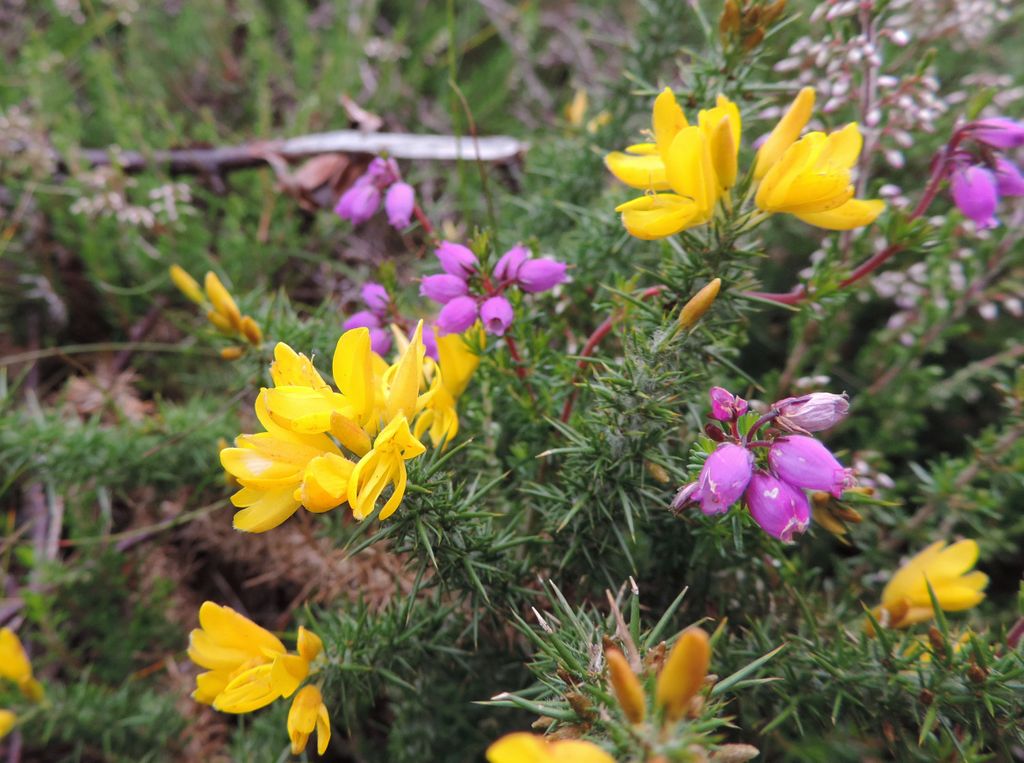
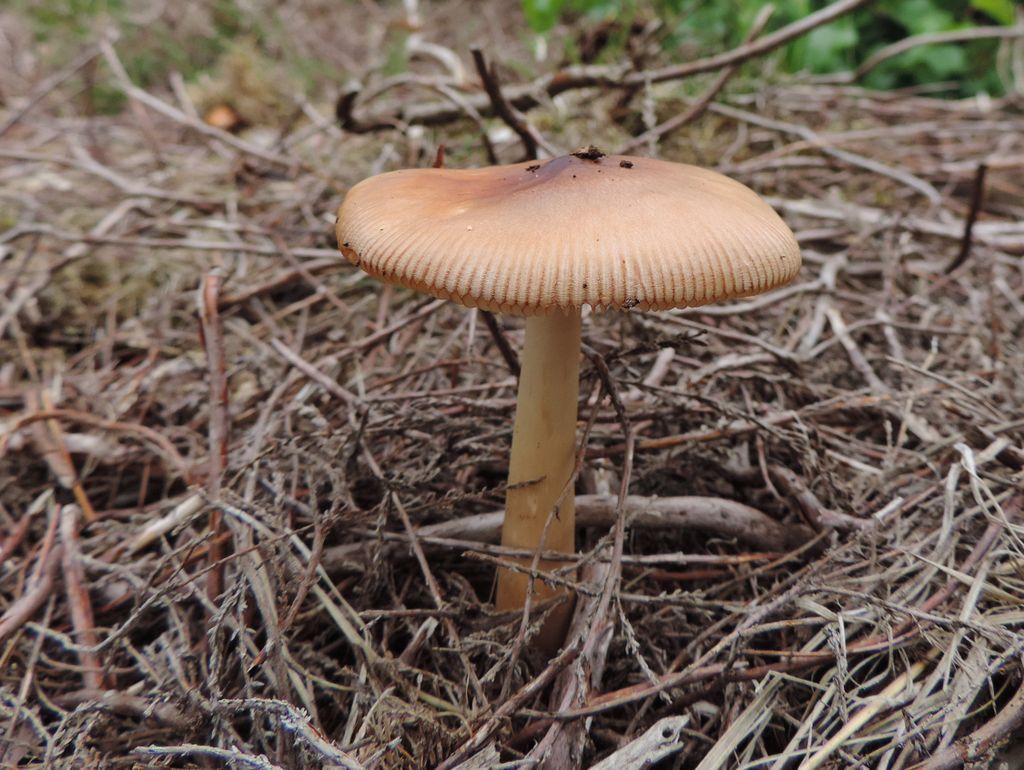
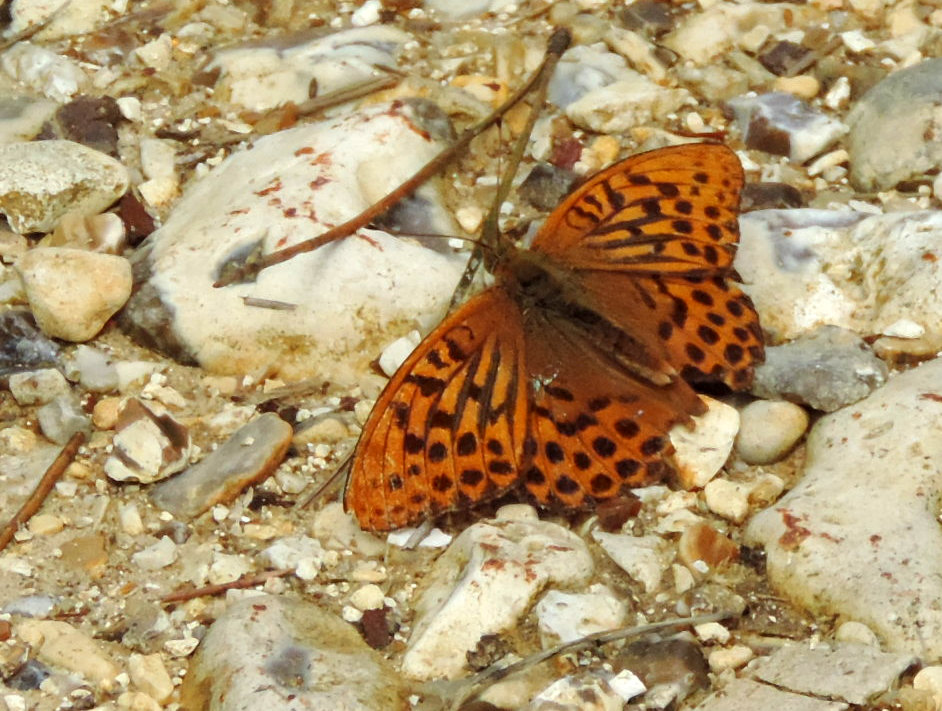
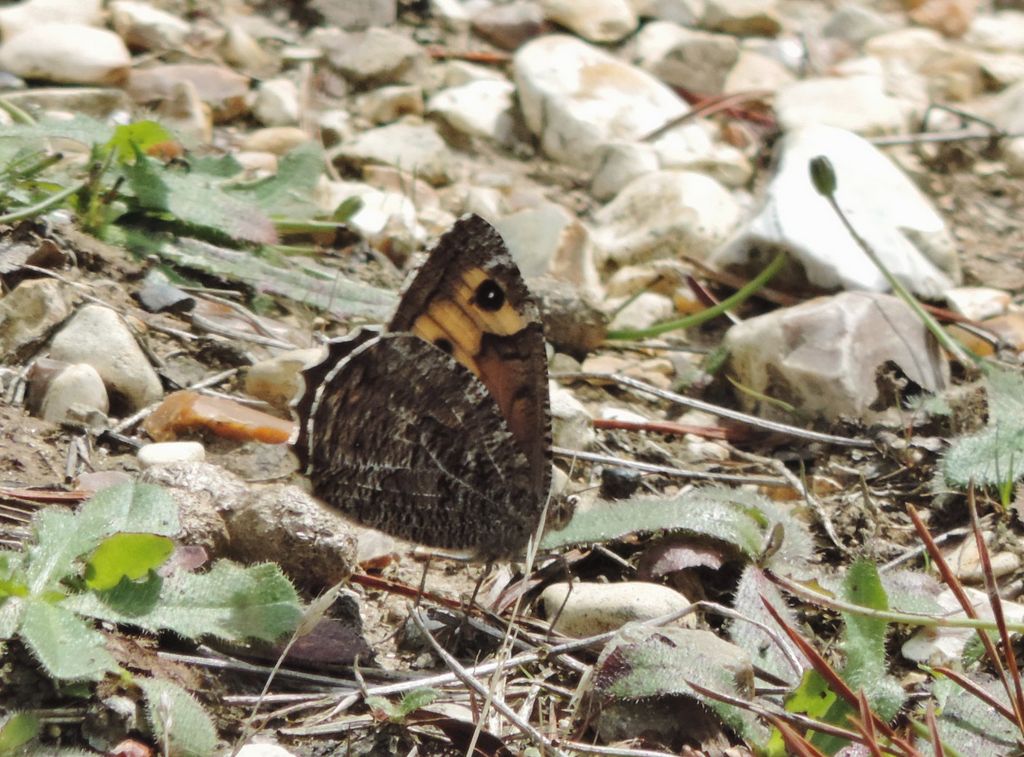
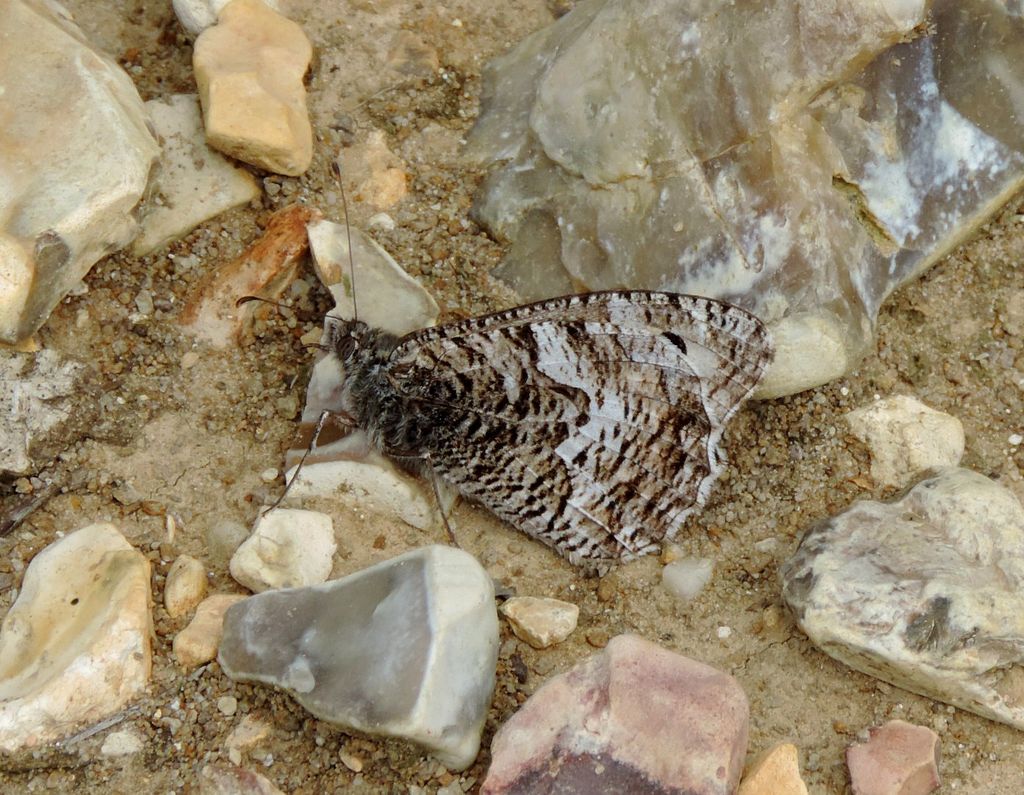
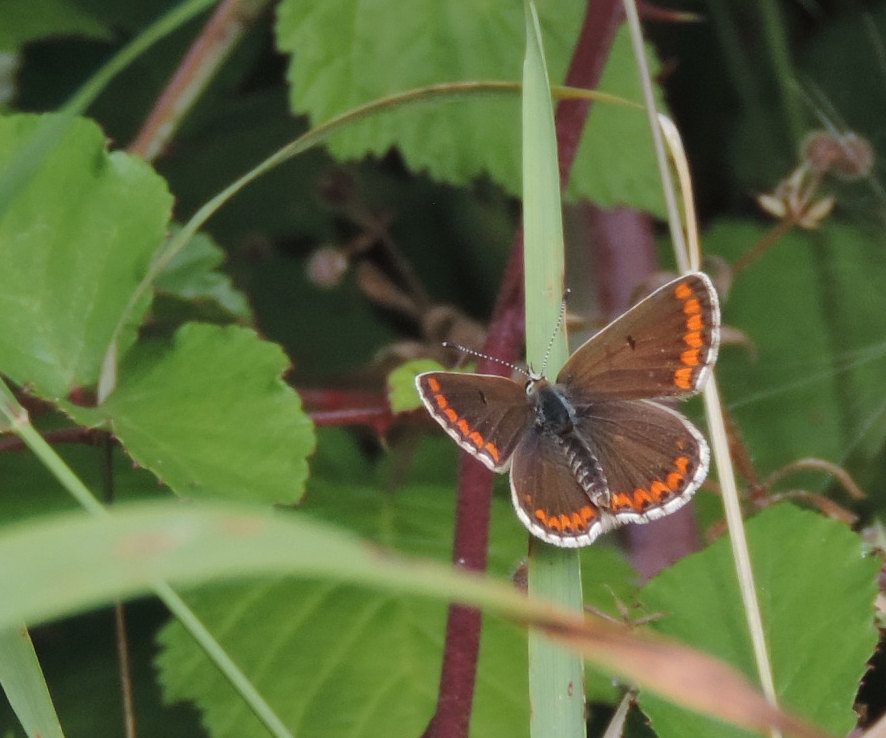
Pictures by Rob Stallard
